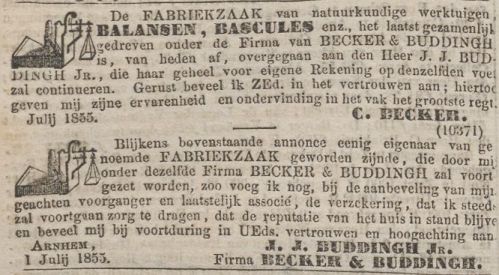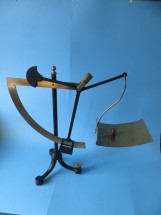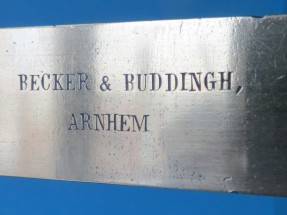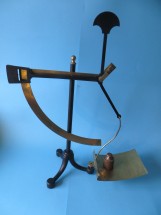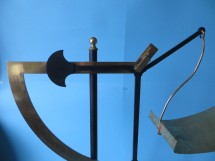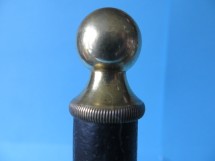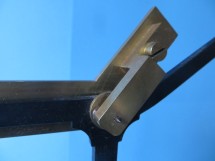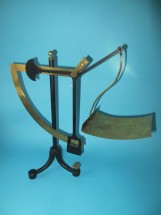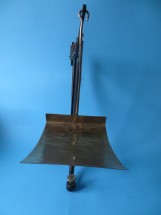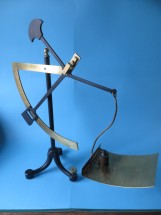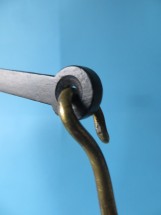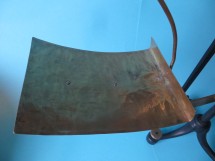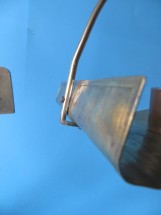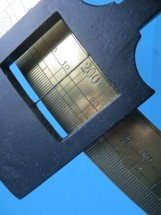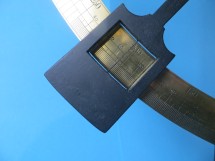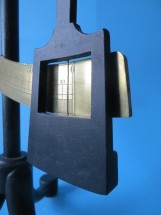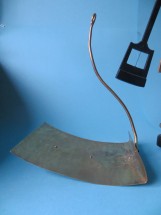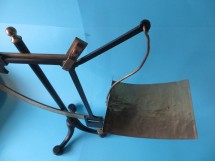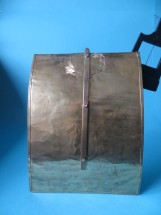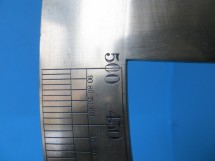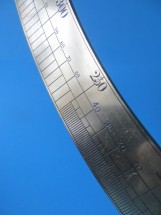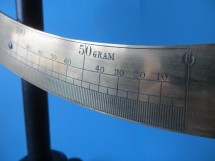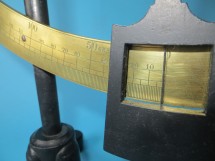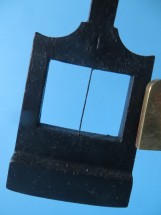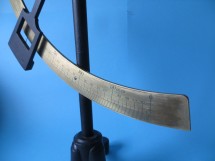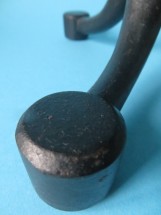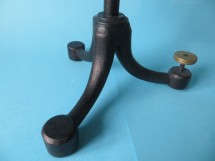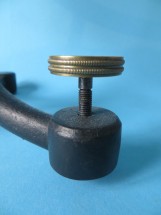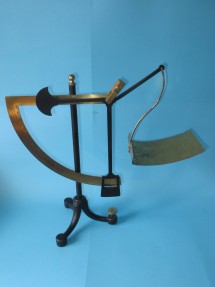
Becker & Buddingh letter scale
Abovementioned Becker is Christopher Becker (1805-1890). He first worked for several years in Germany as an instrument maker. Then he started in the Dutch town Groningen in 1828/1829 a successful business in constructing and producing instruments. In 1841 he moved to Arnhem and began an instrument factory in 1842. Abovementioned Buddingh is Jan Jurriën Buddingh jr. (1832-1905). Hij was educated in France to the profession of instrument maker according to dr. Joke Mooij in "Instrumenten, wetenschap en samenleving" on page 124. Much more extensive and detailed information gives prof.dr.ir. Leen Aardoom in the journal De Hollandse Cirkel, volume 15, nr.4, December 2013, pp. 162-173 in his article "Jan Jurriën Buddingh (1832-1905), Arnhems fabrikant van fysische en mathematische instrumenten". herein Aardoom mentions no education in France. From 1847 J.J. Buddingh jr. works at C. Becker. It became quite a few years, showed a newspaper ad in which the start of the firm Becker & Buddingh per January 17, 1855 was announced by C. Becker. C. Becker emigrated to America already in 1854, his brother in law C.Th. Marius then often looked after his business interests in Arnhem. By July 1, 1855 J.J. Buddingh jr. purchased the company through the brother in law C.Th. Marius. Buddingh maintained the name Becker in his company name because of the good name based on previous products of high quality. See the ad listed below that appeared in the daily newspaper Algemeen Handelsblad of July 3 and July 7, 1855. In the early years there was quite a disagreement with C.Th. Marius and also with C. Becker from America over the rights to use the name Becker on scales, balances and bascules. Many ads in newspapers from that time illustrate that.
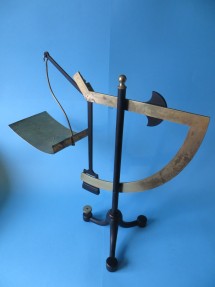
back of the scale

